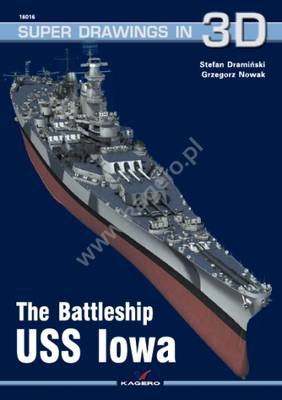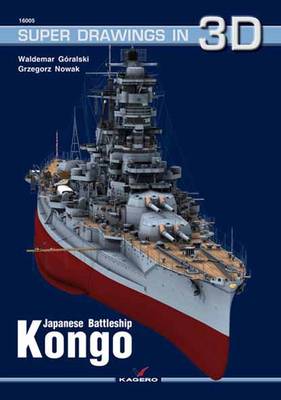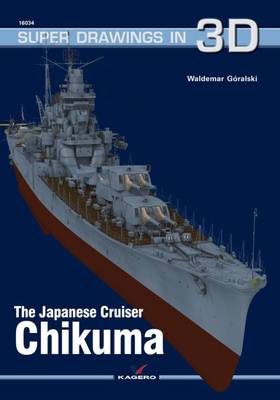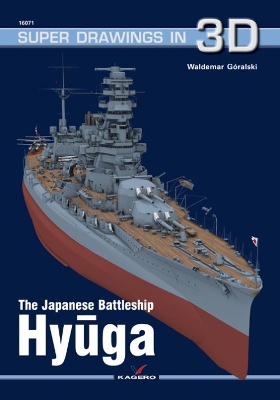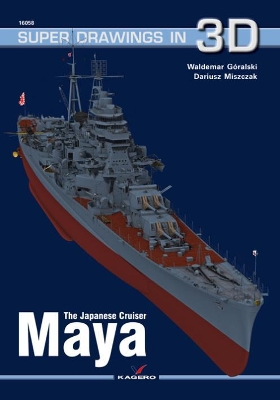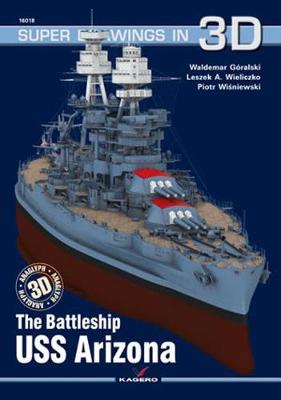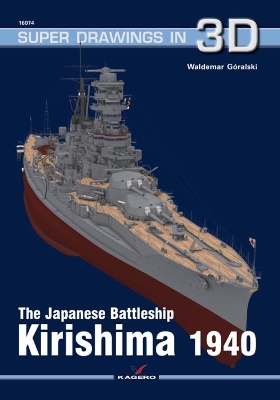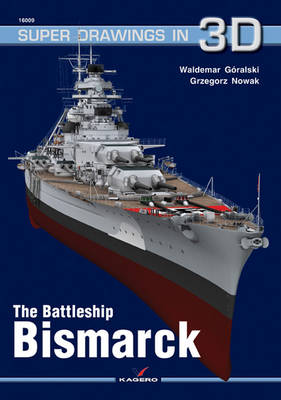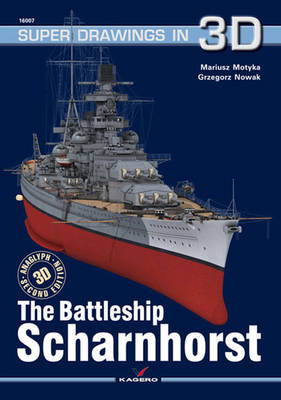Super Drawings in 3D
10 total works
About the Series
This brand-new series focuses on the construction of famous ships– battleships, carriers, cruisers, and submarines. With ground-breaking 3D imagery, each corner, angle, and dimension of the ship is viewable. With various close-up views, and each 3D image based on actual technical scale drawings and photographs, this is an exceptional reference tool. Information on the design, development and combat history of each vessel is also included, as well as numerous photographs and 1/350th scale drawings.
This modelling guide provides a lavishly illustrated history of this impressive warship with numerous close-up and panoramic shots based on actual technical drawings.
About the Series
This brand-new series focuses on the construction of famous ships– battleships, carriers, cruisers, and submarines. With ground-breaking 3D imagery, each corner, angle, and dimension of the ship is viewable. With various close-up views, and each 3D image based on actual technical scale drawings and photographs, this is an exceptional reference tool. Information on the design, development and combat history of each vessel is also included, as well as numerous photographs and 1/350th scale drawings.
Design work began in 1913 and all funds for the start of word were collected by July 1914. On May 6, 1915, at the Mitsubishi group shipyard in Nagasaki, a keel for the new battleship was laid. On January 27, 1917, the ship was launched receiving the name Hyuga (after the name of the province). On November 1, 1917, Commander Eitaro Shimodairo became the first captain of the battleship.
The Hyuga battleship project was based on the design of the Fuso battleship. Some changes were made to it. The hull was extended by 3 meters, and the armor of the ship's magazines and the central command post were changed. The layout of guns 1 and 2 was changed, which allowed placing the boiler room closer to the bow and fitting the funnels closer to each other. It also allowed putting artillery guns 3 and 4 behind the boiler room. It was not a good choice, because it was necessary to carry the steam ducts to the engine room through the ship's magazines. A better solution was to install the wires under the ship's magazines and over the double bottom.
The Battleship USS Arizona
by Waldemar Goralski, Leszek A. Wieliczko, and Piotr Wisniewski
About the Series
This series focuses on the construction of famous ships – battleships, carriers, cruisers, and submarines. With ground-breaking 3D imagery, each corner, angle, and dimension of the ship is viewable. With various close-up views, and each 3D image based on actual technical scale drawings and photographs, this is an exceptional reference tool. Information on the design, development and combat history of each vessel is also included, as well as numerous photographs and 1/350th scale drawings.
During her war career, Prinz Eugen fought alongside the battleship Bismarck in the Battle of the Denmark Strait, where she was hit three times; was torpedoed by the British submarine HMS Trident, and from August 1944 onward, she was deployed to shell advancing Soviet troop concentrations along the Baltic coast and to transport German refugees to the west.
About Super Drawings in 3D This series focuses on the construction of famous ships– battleships, carriers, cruisers, and submarines. With ground-breaking 3D imagery, each corner, angle, and dimension of the ship is viewable. With various close-up views, and each 3D image based on actual technical scale drawings and photographs, this makes an exceptional reference tool. Information on the design, development and combat history of each vessel is also included, as well as numerous photographs and 1/350th scale drawings.
Following the defeat in the World War I, the Treaty of Versailles limited the tonnage of the German Navy to 144 thousand tons. Moreover, the treaty stipulated that new warships could only be built to replace the decommissioned ones. In 1921 a new law was enacted which brought about the creation of the Reichsmarine. The few warships that Germany was allowed to keep were modernized and new ones were being built to replace the obsolete ones. Construction of light cruisers was a priority and the first of those, built to replace the Niobe launched in the 19th century, was the Emden. In 1927, during the disarmament conference in Geneva, Germany demanded equal right as far as the expansion of the navy was concerned. Those demands were rejected, therefore, the Reichsmarine drew up the “expansion plan”. It stipulated construction of new warships within the coming years, including submarines, which were forbidden by the Treaty of Versailles…
Despite her fame, Bismarck took part in only one operation during her brief career. She and the heavy cruiser Prinz Eugen left Gotenhafen on the morning of 19 May 1941 for Operation Rheinübung, during which she was to intercept and destroy convoys between the United States and Great Britain. When Bismarck and Prinz Eugen attempted to break out into the Atlantic, they were discovered by the Royal Navy and were attacked in Denmark Strait. During the short engagement, the British flagship battlecruiser, HMS Hood, was sunk after several minutes of firing. In response, British Prime Minister Winston Churchill issued the order to "Sink the Bismarck," spurring a relentless pursuit by the Royal Navy.
Two days later, Swordfish biplanes launched from the carrier HMS Ark Royal torpedoed the Bismarck. In the ensuing battle on the morning of 27 May 1941, Bismarck was heavily attacked for almost two hours before finally sinking and taking many German soldiers to their watery grave.
About the Series
This brand-new series focuses on the construction of famous ships– battleships, carriers, cruisers, and submarines. With ground-breaking 3D imagery, each corner, angle, and dimension of the ship is viewable. With various close-up views, and each 3D image based on actual technical scale drawings and photographs, this makes an exceptional reference tool. Information on the design, development and combat history of each vessel is also included, as well as numerous photographs and 1/350th scale drawings.
The notorious battleship Scharnhorst, named after the Prussian General and army reformer Gerhard von Scharnhorst, was a thorn in the Allies side, sinking numerous ships and severely threatening British seaborne supply lines. The lead in her class and weighing in at 31,100 ton the Scharnhorst terrorized Allied merchant ships in the Atlantic shipping lanes for four years, before finally being sunk by HMS Norfolk in the Battle of the North Cape in 1943.
About the Series
This brand-new series focuses on the construction of famous ships– battleships, carriers, cruisers, and submarines. With ground-breaking 3D imagery, each corner, angle, and dimension of the ship is viewable. With various close-up views, and each 3D image based on actual technical scale drawings and photographs, this makes an exceptional reference tool. Information on the design, development and combat history of each vessel is also included, as well as numerous photographs and 1/350th scale drawings.
